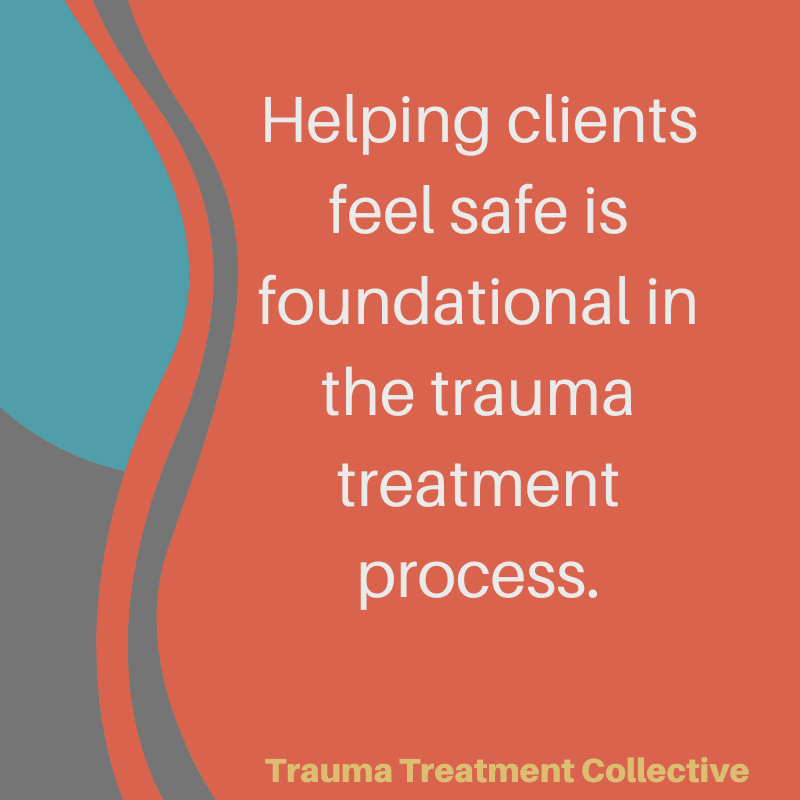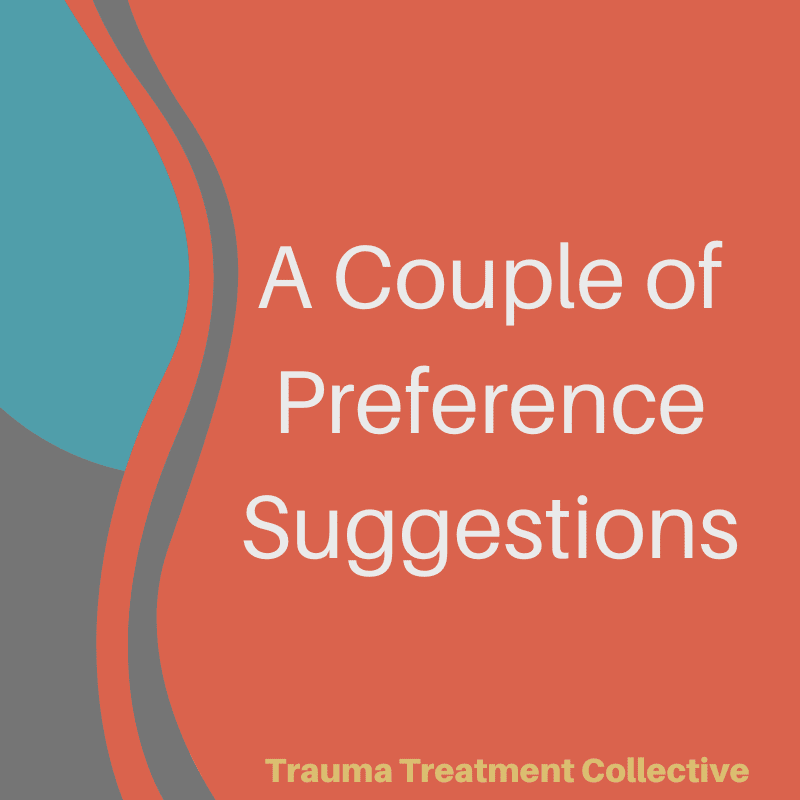
When referring to preferences in trauma treatment, they are things that can help the client feel safe, calm, or more settled in their time with you. Helping clients feel safe is foundational in the trauma treatment process. Some clients will come with some experiences of safety, and others will be introduced to safety for the first time through the work you all do together. Offering preferences is a simple and easy way to establish safety in the beginning of a new trauma treatment relationship.
Now that I got you all excited about the power of preferences, there are a couple of things I would encourage you to do before you jump out there and start offering preferences to your clients.
The first thing I would encourage is for you to think about areas where you are willing to bend. What are places in the treatment process where you don’t mind if it is this way or that way? For example, the environment might be a good place to start. Maybe you don’t mind if it is cold or hot, darker or brighter, music or no music, scent or no scent, etc.
Also make sure to consider your own preferences in the process. Don’t override your comfort for the sake of someone else. It will show up in the work later. Maybe, if possible, think of a compromise that might feel good. If the compromise is handled right, it can foster a sense of creating a healing environment together.

A couple of preference areas to consider might be:
- Temperature of the room
- Lighting of the room
- Background noise
- Scents in the room
- Distance between seats
- Which chair the client sits in
- Offering different types of beverages
- Offering a blanket or pillow
The list could go on and on, but these are just some to get you thinking. Consider offering some of these preferences and then once a client expresses their preference and you meet the request, help them to notice what it was like to express that preference and what it is like for you to meet that request. Also if you are seeing clients virtually, consider some preferences that you can offer.
This small intervention can be powerful in helping clients to connect with a deeper sense of safety, calm, or settledness. I invite you to try it out and see what happens if this is not normal in your practice.

